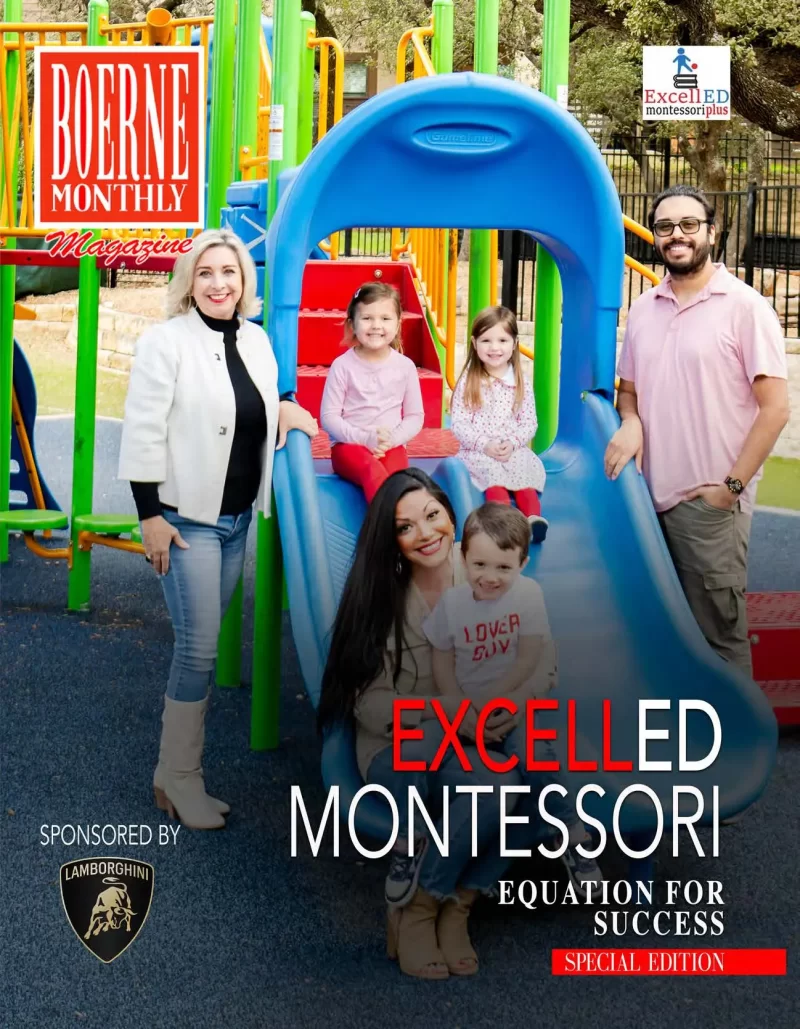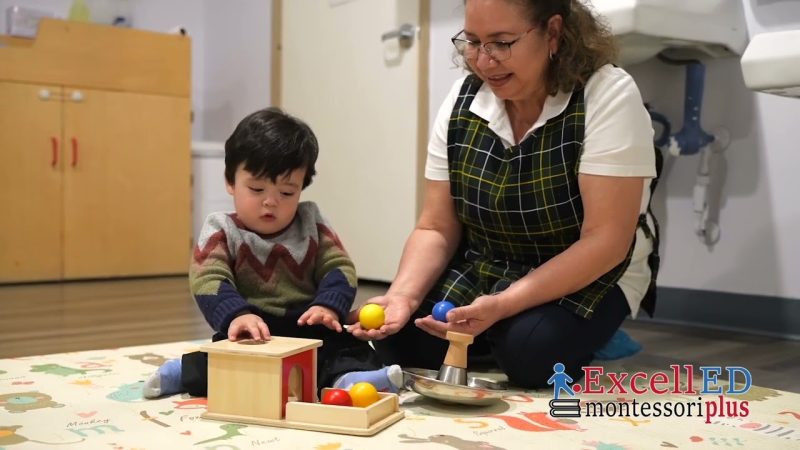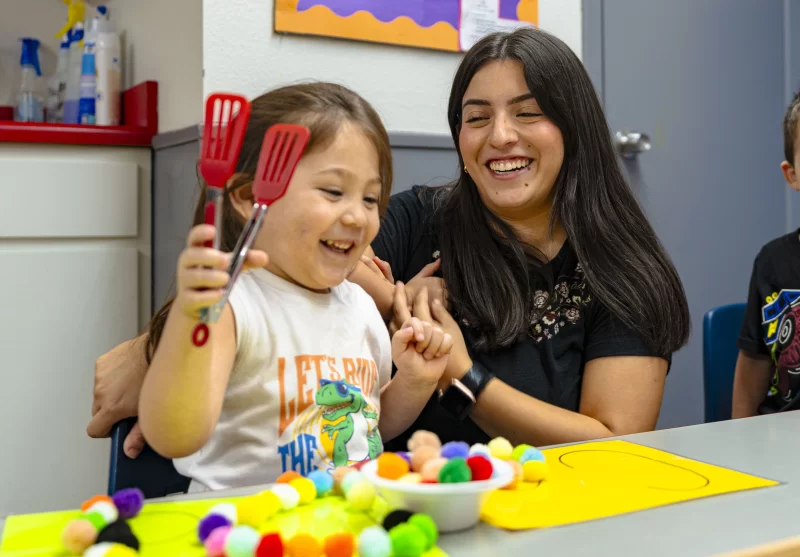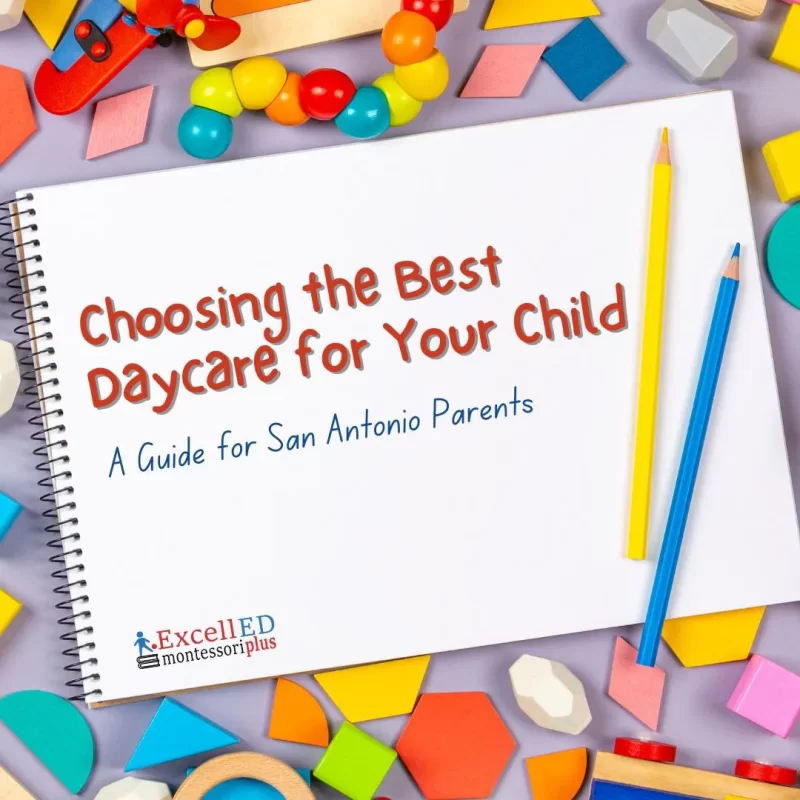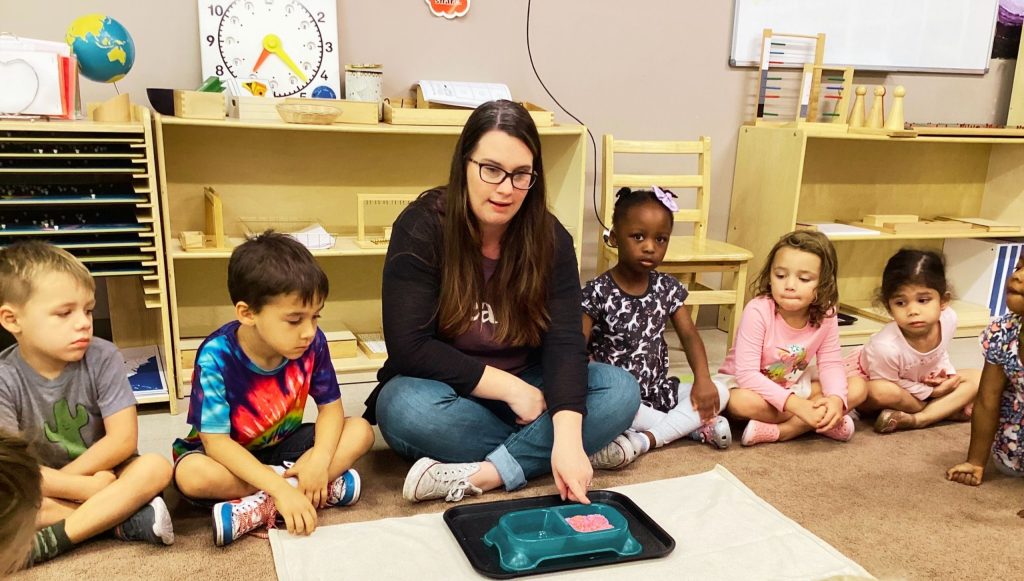
In a Montessori classroom, we often call the teacher a “guide” or “facilitator” instead of a traditional teacher. This guide creates a supportive space where children learn and grow at their own speed. They watch each child closely to understand their needs and interests, then tailor their support to help each child along their learning path.
The Role of the Montessori Teacher: Guide, Observer, and Facilitator
Montessori teachers may seem less visible but play a vital role. They act more as observers and helpers rather than direct teachers. They watch each child’s progress, stepping in with guidance when needed. Their main job is to set up the classroom and introduce activities that fit each child’s interests and growth stage. This setup lets children explore on their own, building skills like problem-solving, independence, and a love of learning. This is different from traditional schools where the teacher often leads the learning.
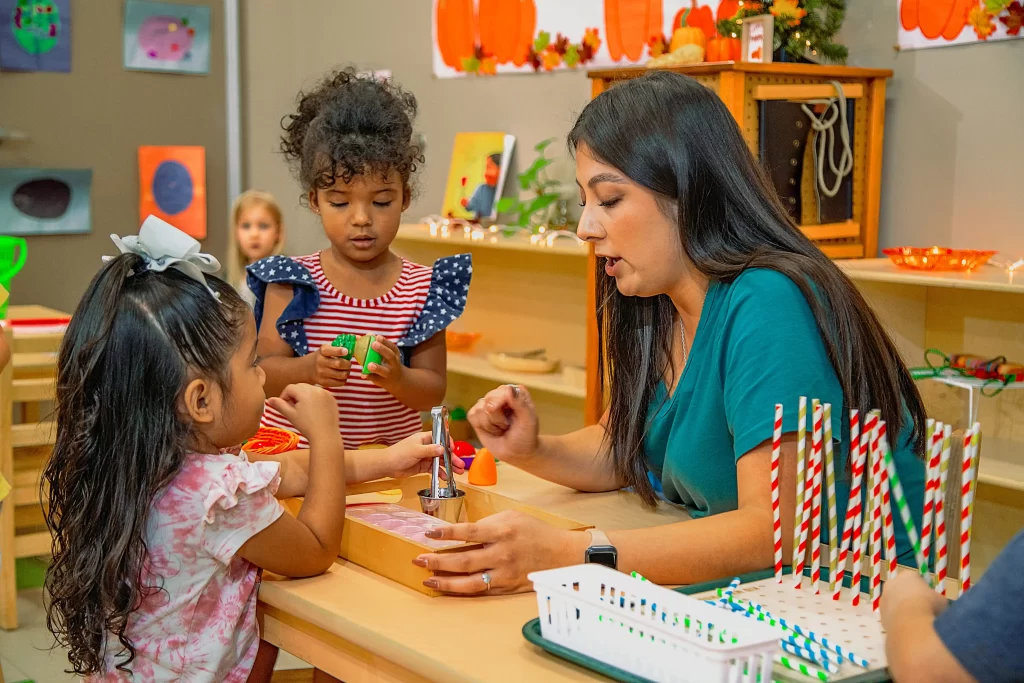
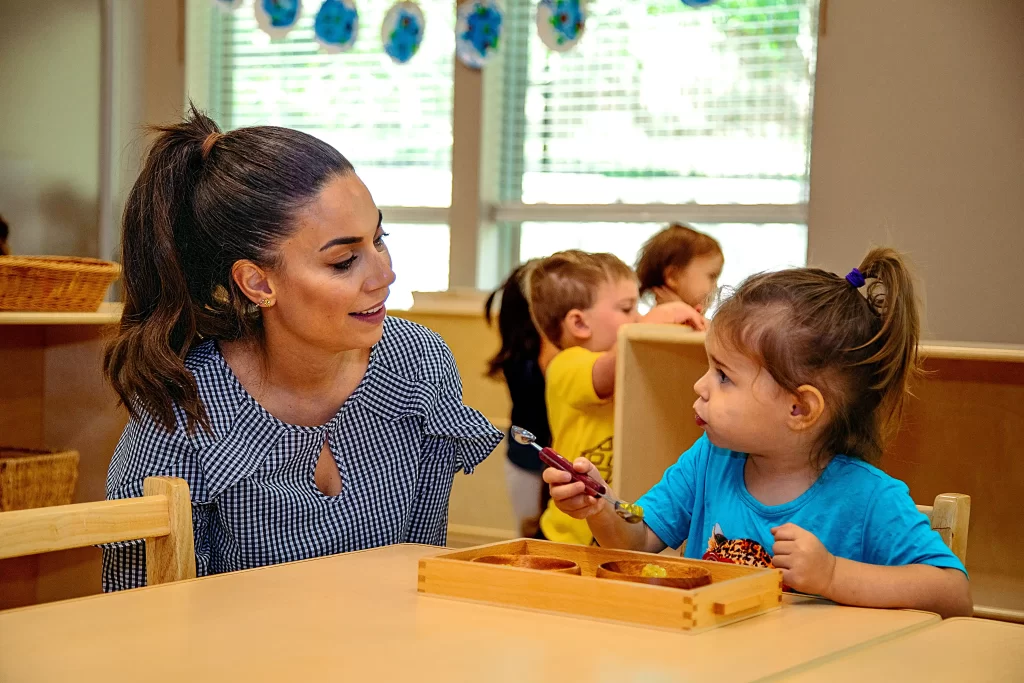
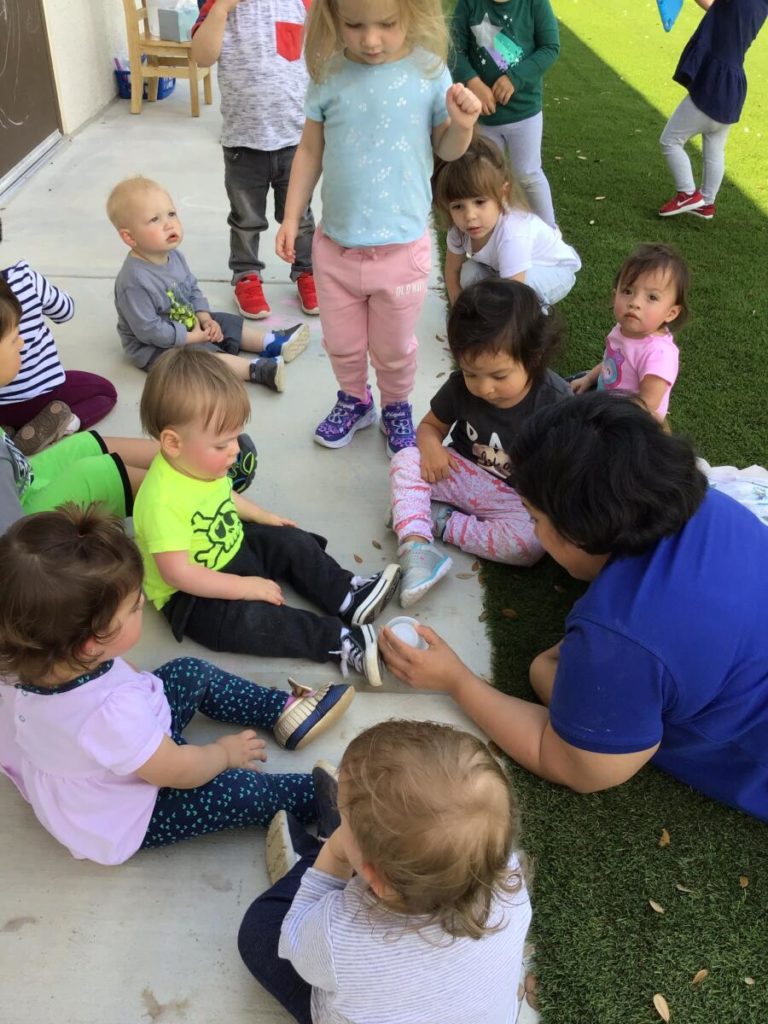
Key Duties of a Montessori Guide
Here are some key aspects of the teacher’s role in a Montessori classroom:
- Observation: The teacher spends a lot of time observing the children, their interests, and their learning styles. This helps the teacher to better understand each child’s unique needs and tailor their instruction accordingly.
- Preparation of the Environment: The teacher carefully prepares the classroom environment, ensuring that it is well-organized, clean, and stocked with a range of age-appropriate materials and activities that promote learning and development.
- Facilitation of Learning: The teacher helps children to explore and engage with the materials and activities in the classroom, providing guidance and support as needed.
- Encouragement of Independence: The teacher fosters independence by allowing children to choose their own activities and work independently as much as possible. The teacher encourages children to take responsibility for their own learning and development.
- Nurturing of Social Skills: The teacher helps children to develop social skills such as cooperation, respect for others, and effective communication. The teacher models positive behaviors and provides opportunities for children to work together and learn from one another.
- Assessment: The teacher regularly assesses each child’s progress and provides feedback on their learning. The teacher also provides guidance on areas where the child can improve and suggests activities to support their continued growth.
Overall, the role of the teacher in a Montessori classroom is to create a nurturing and supportive environment where children can learn and grow in their own unique way. The teacher acts as a guide and facilitator, encouraging independence and a love of learning, and helping children to develop the skills and knowledge they need to succeed in life.
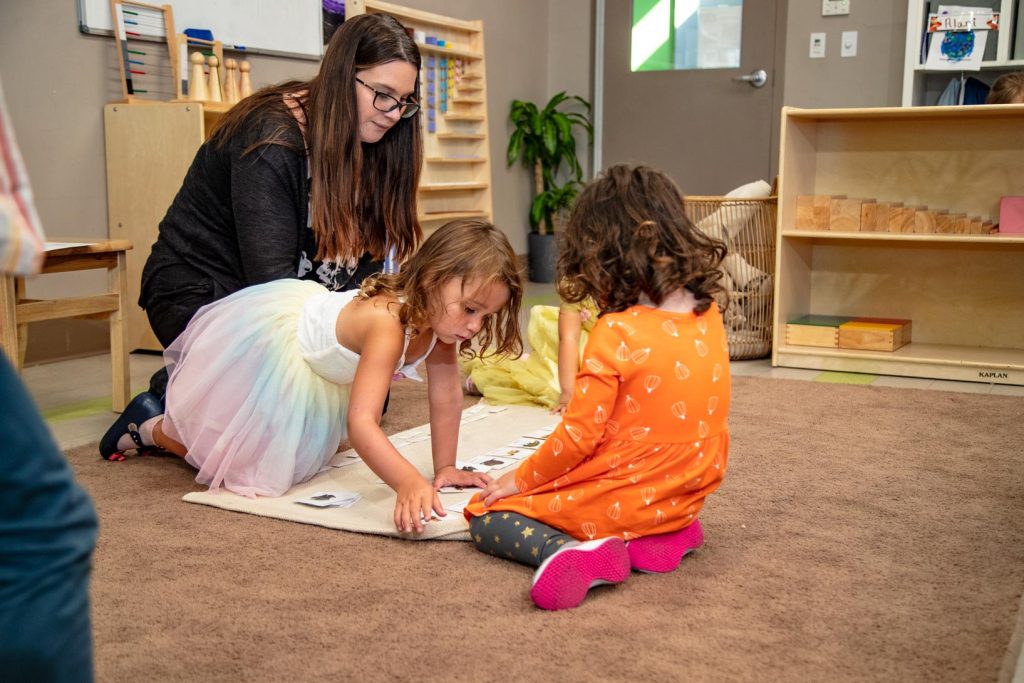
Montessori Guide vs. Traditional Classroom Teacher: A Comparison
The main difference between a Montessori guide and a traditional teacher is their approach to education and the role they play in the learning process.
Montessori Guide:
- Trained in the Montessori method, which emphasizes a child-centered, individualized approach to learning.
- Serves as a facilitator or guide to the child’s learning, rather than as a traditional instructor.
- Focuses on creating a prepared environment that allows for independent exploration and self-directed learning.
- Provides children with carefully selected materials that are designed to engage their curiosity and promote learning through hands-on, experiential activities.
- Prioritizes the development of social and emotional skills, encouraging children to work collaboratively and build meaningful relationships with their peers.
Traditional Teacher:
- Typically follows a more structured, curriculum-based approach to education.
- Plays a more directive role in the classroom, presenting information and guiding students through the learning process.
- Focuses on teaching a set curriculum and transferring knowledge to their students.
- Often emphasizes testing and assignments as a way to evaluate student learning.
- May prioritize the acquisition of knowledge over the development of social and emotional skills.
What is the best learning approach for my child: Montessori vs. Traditional?
Choosing between a Montessori guide and a traditional teacher for your child is a personal decision that depends on a variety of factors, including your child’s learning style and personality, your family’s values, and the availability of different educational options in your area. Here are some points to consider when making this decision, presented in a checklist format:
Montessori:
- Does my child thrive in an environment that encourages independent exploration and hands-on learning?
- Is my child comfortable with a less structured approach to learning and a more collaborative classroom environment?
- Do I value the development of social and emotional skills as much as academic knowledge?
- Do I want my child to have a strong sense of responsibility and independence from an early age?
- Am I willing to commit to a longer-term educational plan, since the Montessori method often involves a multi-year curriculum?
Traditional:
- Does my child thrive in a structured environment with clear expectations and routines?
- Is my child comfortable with a more teacher-directed approach to learning and a focus on classroom lectures and assignments?
- Do I prioritize the acquisition of academic knowledge over social and emotional development?
- Do I prefer a curriculum that is aligned with standardized testing and provides clear benchmarks for progress?
- Is a shorter-term educational commitment more important to me, since traditional schools often operate on a yearly schedule?
Ultimately, the best educational option for your child will depend on their individual needs and preferences, as well as your family’s values and resources. It can be helpful to visit both Montessori and traditional schools, talk to teachers and administrators, and observe classes before making a decision.
Related Links:
The Invisible Teacher: The Magic of Montessori,
Unleashing the Power of the Montessori Prepared Environment,
Empowering Young Minds through Guidance and Exploration
Subscribe to Newsletter
Programs offered at ExcellED Montessori Plus include:
✔️Infants (10 Weeks – 18 Months)
✔️Toddlers (18 – 36 Months)
✔️Primary (3-6 Years)
✔️Kindergarten
✔️Mother’s Day Out
✔️Spanish Immersion / Dual Language
✔️After School Programs and Summer Camp (6 – 12 Years)
Music, Spanish, and Yoga are other programs included as part of the tuition.
Learn more about Inquiry-based Learning


